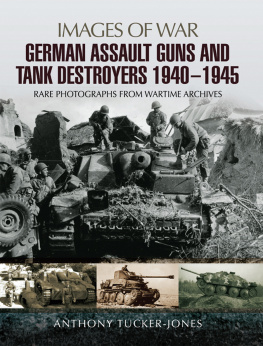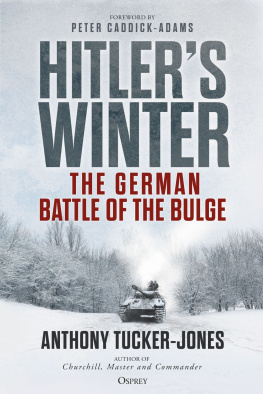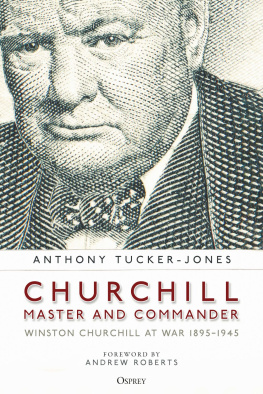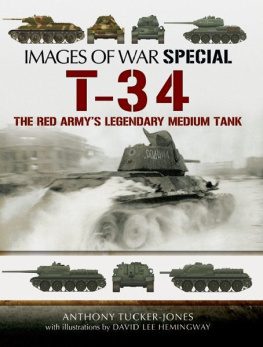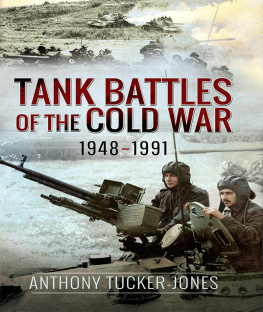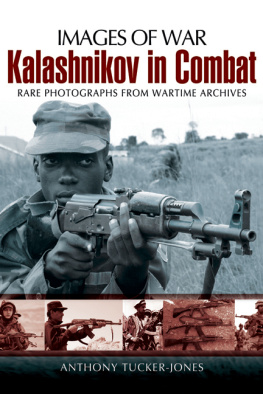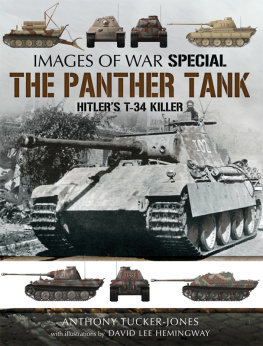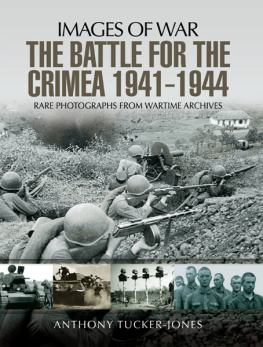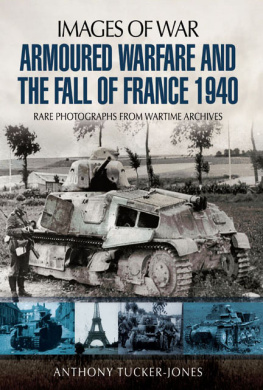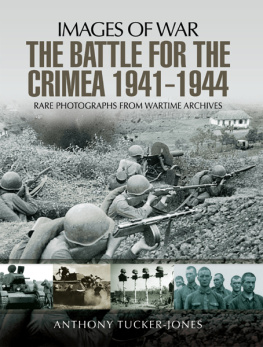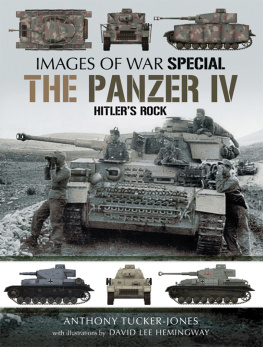First published in Great Britain in 2016 by
PEN & SWORD MILITARY
an imprint of
Pen & Sword Books Ltd,
47 Church Street,
Barnsley,
South Yorkshire
S70 2AS
Text copyright Anthony Tucker-Jones, 2016
Photographs copyright as credited, 2016
Every effort has been made to trace the copyright of all the photographs.
If there are unintentional omissions, please contact the publisher in writing, who will correct all subsequent editions.
A CIP record for this book is available from the British Library.
ISBN 978 147384 599 2
eISBN 978 147384 600 5
Mobi ISBN 978 147384 601 2
The right of Anthony Tucker-Jones to be identified as Author of this Work has been asserted by him in accordance with the Copyright, Designs and Patents Act 1988.
All rights reserved. No part of this book may be reproduced or transmitted in any form or by any means, electronic or mechanical including photocopying, recording or by any information storage and retrieval system, without permission from the Publisher in writing.
Pen & Sword Books Ltd incorporates the imprints of Pen & Sword Archaeology, Atlas, Aviation, Battleground, Discovery, Family History, History, Maritime, Military, Naval, Politics, Railways, Select, Social History, Transport, True Crime, Claymore Press, Frontline Books, Leo Cooper, Praetorian Press, Remember When, Seaforth Publishing and Wharncliffe.
For a complete list of Pen & Sword titles please contact
Pen & Sword Books Limited
47 Church Street, Barnsley, South Yorkshire, S70 2AS, England
E-mail:
Website: www.pen-and-sword.co.uk
Introduction:
An Independent Weapon
T his photographic history visually chronicles the hugely successful range of German assault guns, tank destroyers and tank hunters which were developed during the Second World War. As the conflict progressed, the German Army had to find a use for its obsolete panzers and this gave rise to vehicles such as the turretless Sturmgeschtz, designed for an infantry support role. From 1943 Hitlers assault guns and tank destroyers played a vital role in Nazi Germanys increasingly defensive war.
One of the great advantages of the Sturmgeschtz was its low profile. General Hasso von Manteuffel, summing up Hitlers Panzerwaffe (armoured force), said: Fire-power, armour protection, speed and cross-country performance are the essentials, and the best type of tank is that which combines these conflicting requirements with most success. In my opinion the German Panzer V, the Panther, was the most satisfactory of all, and would have been close to ideal had it been possible to design it with a lower silhouette.
Lacking turrets, the German assault guns, tank destroyers and tank hunters were primarily designed to support the infantry and panzergrenadier divisions, and were a very distinct fighting arm from the Panzerwaffe. Because the assault guns equipped the assault artillery batteries, they came under the direct command of the German Armys artillery and not the Panzerwaffe, which resulted in a needless turf war.
As the conflict progressed, these armoured vehicles deployed with the independent StuG brigades, the assault gun detachments, Panzerjger detachments and tank detachments of infantry and panzer divisions. Often a lack of tanks meant that they were called on to fill the panzers role. They proved ideal during the massive defensive battles fought on the Eastern Front, as well as in Italy and Normandy, and ultimately they were instrumental in delaying the defeat of Hitlers Nazi Germany.
German self-propelled guns operated in a variety of roles but with the focus on serving as a platform for anti-tank guns or field artillery. It is important to clarify that German self-propelled guns consisted of both open-topped and enclosed fighting compartments installed on a vast variety of tank chassis. These were termed Panzerjger (tank hunter) or Sturmgeschtz (assault gun), utilising light and medium tank chassis respectively. Confusingly, the latter were initially organised into battalions and then brigades were renamed Sturmartillerie (assault artillery). The Germans also used the term Jagdpanzer (hunting tank); these were essentially more heavily armoured versions of the Panzerjger, using medium and heavy tank chassis. In Western parlance, both types were simply considered tank destroyers.
Although the primary role of the assault gun evolved from assault artillery to antitank weapon, these units came under the responsibility of the artillery. This meant that the StuG crews were gunners and not panzertruppen. The backbone of such units were the various model StuG III, StuG IV and StuH42 fully enclosed assault guns. In contrast, the Panzerjger and Jagdpanzer, which were dedicated tank killers, were largely manned by the panzer arm.
Although the assault gun units occasionally served within the panzer and panzergrenadier divisions, they were usually controlled at either Corps or Army level and were allocated on a temporary basis to units that needed their firepower. In the second half of the war assault guns also served as dedicated units within the infantry, panzergrenadier and panzer divisions.
Equally confusingly for the uninitiated, while the bulk of the lighter Panzerjger armoured vehicles were open-topped, they later included enclosed heavier hunting tanks such as the Jagdpanzer, Jagdpanther and the Jagdpanther, utilising the Panther tank.
Panzerjger were distributed liberally and from 1941 onwards were issued to the integral anti-tank battalions of the infantry, panzer and panzergrenadier divisions, as well as to the anti-tank companies of infantry and panzergrenadier regiments and to independent Army and Corps units. Although the field artillery regiments of the panzer and panzergrenadier divisions started the war with towed guns, during the period 194245 self-propelled artillery mountings, such as the Hummel and the Wespe, became available.
Unfortunately for General Heinz Guderian, in his role as overseer of Hitlers Panzerwaffe, he soon fell victim to inter-service rivalry, which was to greatly and needlessly hamper vital tank production. His level of authority and direct access to
the Fhrer caused deep resentment within certain elements of the German High Command, who sought to avoid his authority. Guderians terms of reference, signed by Hitler on 28 February 1943, stated:
The Inspector-General of Armoured Troops is responsible to me for the future development of armoured troops along lines that will make that arm of Service into a decisive weapon for winning the war.
The Inspector-General of Armoured Troops is directly subordinate to myself. He has the command powers of an army commander and is the senior officer of armoured troops.
The term armoured troops was all-encompassing and included tank troops, panzergrenadiers, motorised infantry, armoured reconnaissance troops, anti-tank troops and heavy assault units. Guderian had deliberately included the artillerys assault guns because they were taking up such a high proportion of tank production. In Guderians view, the calibre of the guns on these vehicles and the towed antitank guns was insufficient. He wanted to provide the infantry divisions with assault guns, in place of the towed guns, and to provide the panzer divisions with assault guns only until tank production was sufficient to meet their requirements. In some quarters this was seen as heresy.



